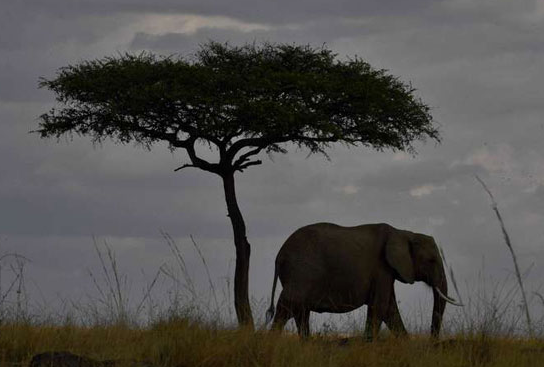
Elephant deaths have dropped by 30 percent this year with 396 deaths recorded this year as compared to 727 deaths last year.
In a statement by the Kenya Wildlife Service, poaching of elephants has also reduced by 50 percent this year as compared to the last year where 80 elephants were poached. 40 elephants were reportedly poached this year.
In Maasai Mara ecosystem, KWS reported that 61 elephants died this year. 23 of them are said to have died of natural causes, 10 due to human-wildlife conflicts and four were poached. 24 are said to have died from causes ‘that were not immediately established since the carcasses were detected when they were extensively scavenged’
The KWS also confirmed that some elephants died as a result of poisoning, arising from human-wildlife conflicts.
“This year, two elephants in Mara ecosystem were confirmed to have died from ingesting carbamate when elephants strayed in to the farms that were sprayed with herbicides and pesticides. There has been an increase in cases of human-wildlife in the Mara ecosystem due to change in land-use which is not compatible with wildlife conservation,” the statement noted.
Despite the deaths, KWS noted that the National elephant population has remained healthy with a current estimate of 35,000 elephants having increased by 119 percent over a period of 29 years from 16,000 elephants in 1989.
According to a recent report by Mara Elephant Project, elephant deaths in Mara ecosystem was a disturbing trend.
“ So, the rise in unknown elephant deaths, a disturbing new trend Mara Elephant Project is seeing in the Mara, needs an explanation,” the report noted.
In September, the organization said three elephants died. While in October 14 elephant carcasses were recorded. Results of the samples have yet to be released.
“The three unknown deaths were elephant carcasses all found in close proximity in protected areas of the Mara ecosystem all within a three-day time period.”
While investigating and documenting the deaths, the organisation reported that both the KWS and their rangers took samples that were sent to a KWS lab for analysis.
They noted that the analysis are being conducted to ascertain whether poison was used to intentionally kill the elephants by use of a strong pesticide or whether the elephants died of natural blood disease.
The organization, however, noted there was need to establish the cause of deaths in order to address the challenges as well as data collection for related incidences.
“If we find out the elephants were poisoned with cyanide, which means they were targeted either for their tusks (poaching) or as retaliation for a conflict-related incident. If we find out an elephant died as a result of a pesticide it helps MEP determine where the pesticide is being used, on what crops and whether it’s now in the water source the elephants were exposed to,” the report noted.
Stay informed. Subscribe to our newsletter
 The Standard Group Plc is a
multi-media organization with investments in media platforms spanning newspaper
print operations, television, radio broadcasting, digital and online services. The
Standard Group is recognized as a leading multi-media house in Kenya with a key
influence in matters of national and international interest.
The Standard Group Plc is a
multi-media organization with investments in media platforms spanning newspaper
print operations, television, radio broadcasting, digital and online services. The
Standard Group is recognized as a leading multi-media house in Kenya with a key
influence in matters of national and international interest.
 The Standard Group Plc is a
multi-media organization with investments in media platforms spanning newspaper
print operations, television, radio broadcasting, digital and online services. The
Standard Group is recognized as a leading multi-media house in Kenya with a key
influence in matters of national and international interest.
The Standard Group Plc is a
multi-media organization with investments in media platforms spanning newspaper
print operations, television, radio broadcasting, digital and online services. The
Standard Group is recognized as a leading multi-media house in Kenya with a key
influence in matters of national and international interest.









